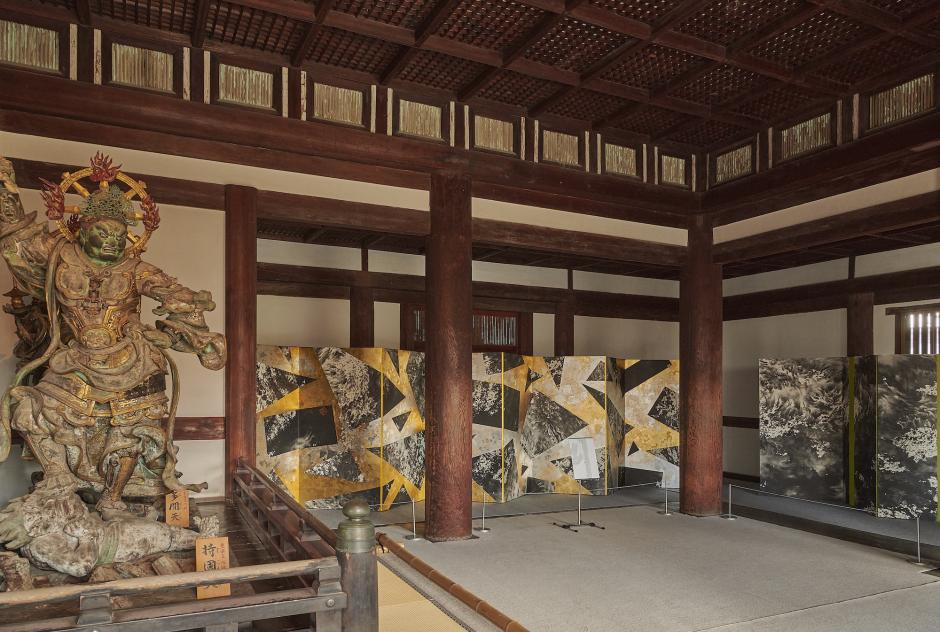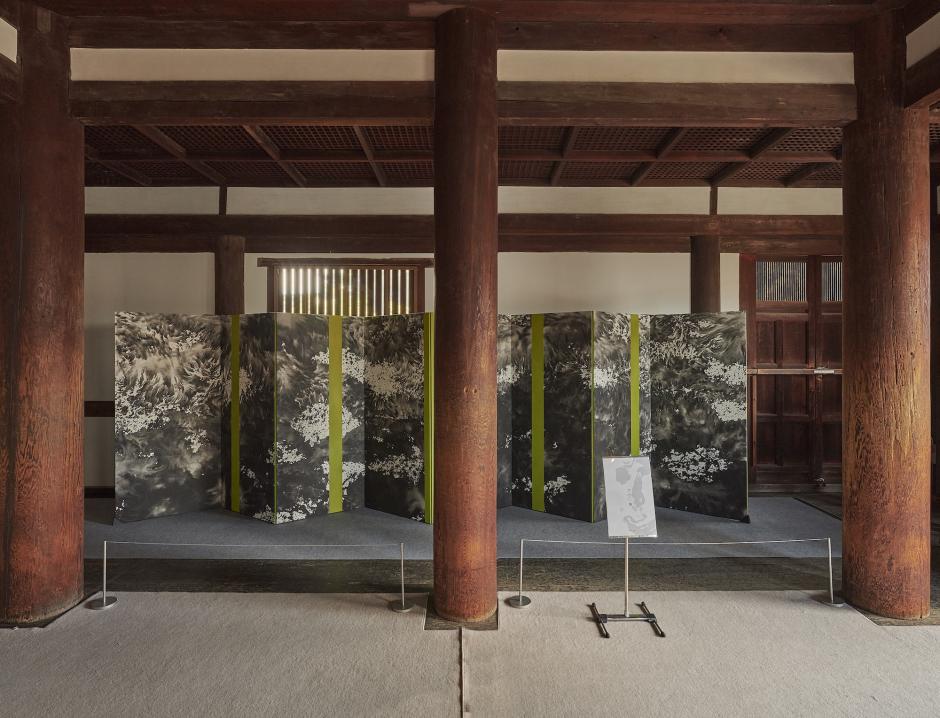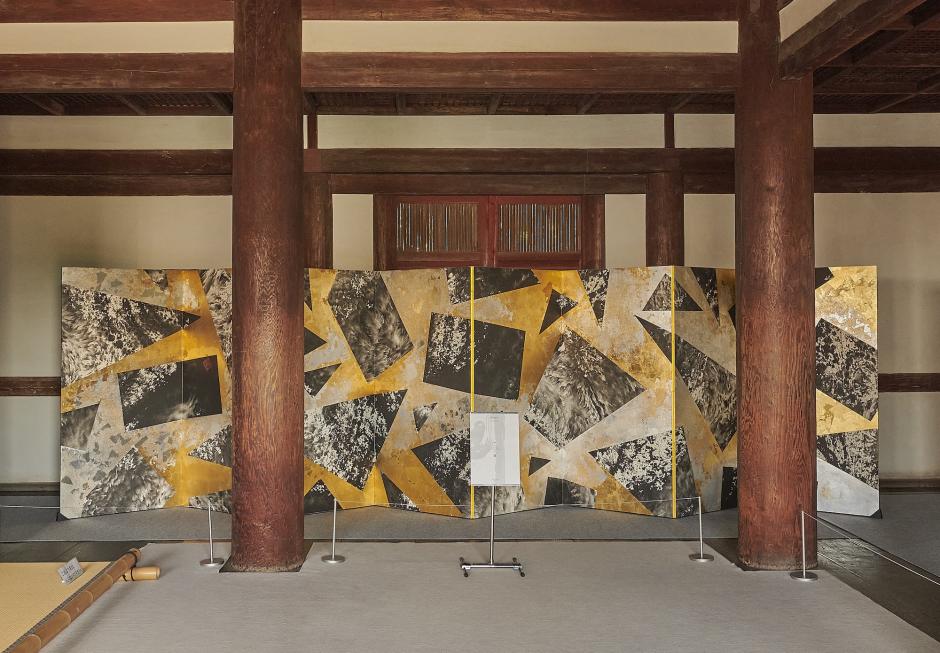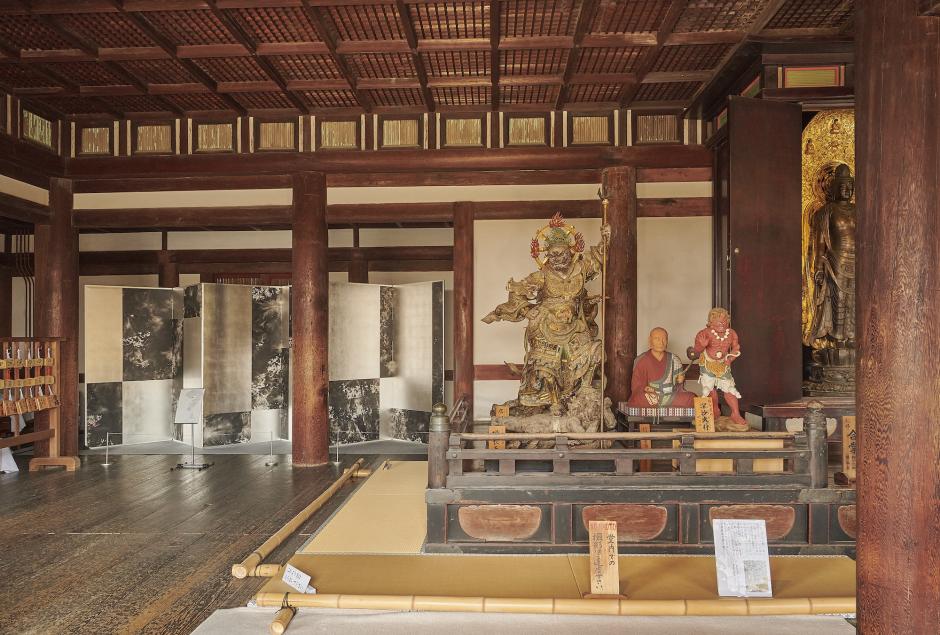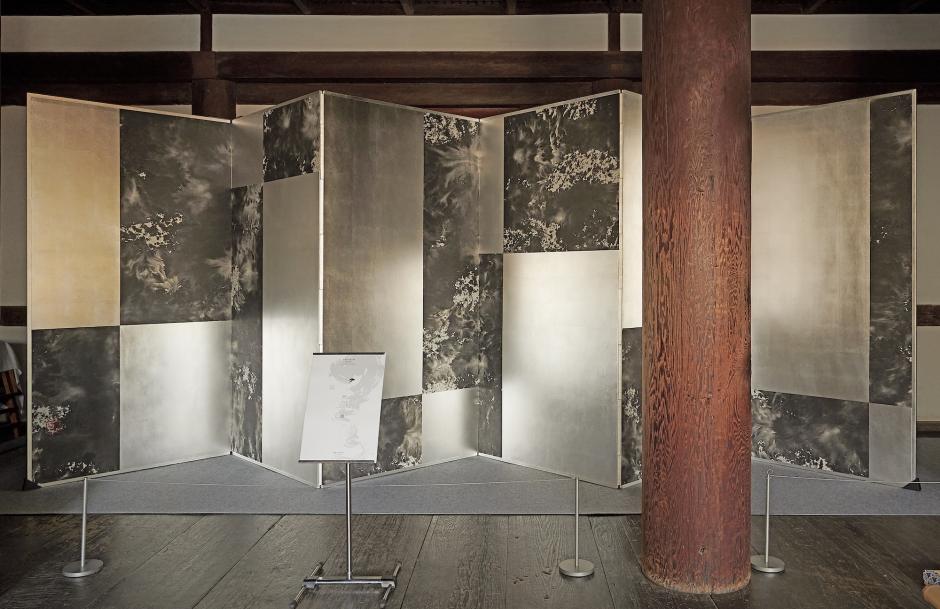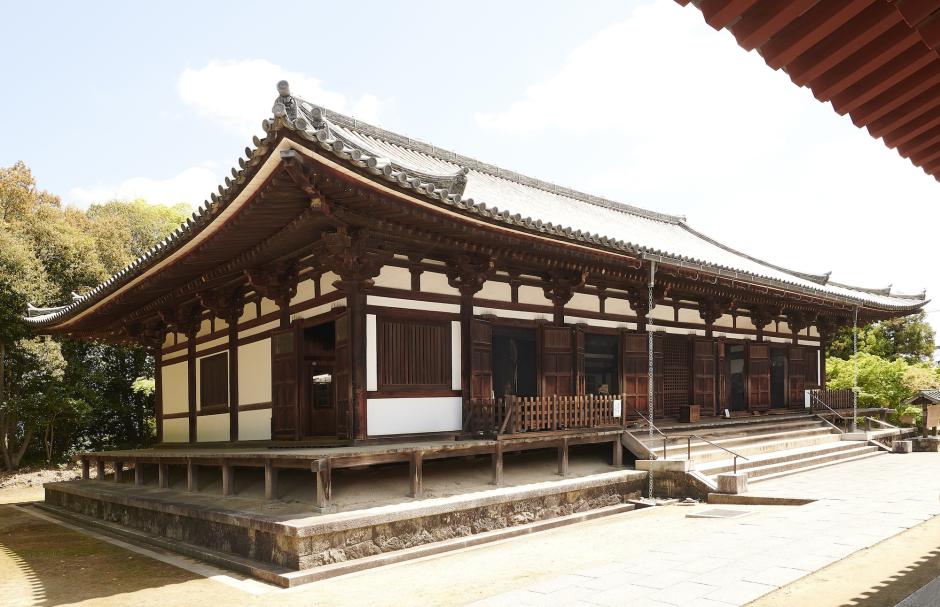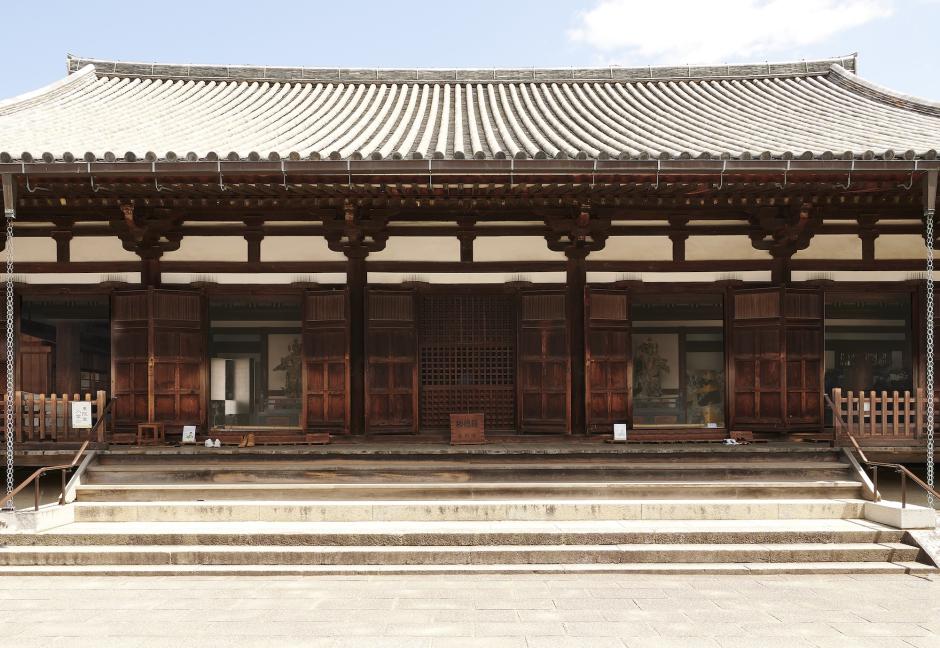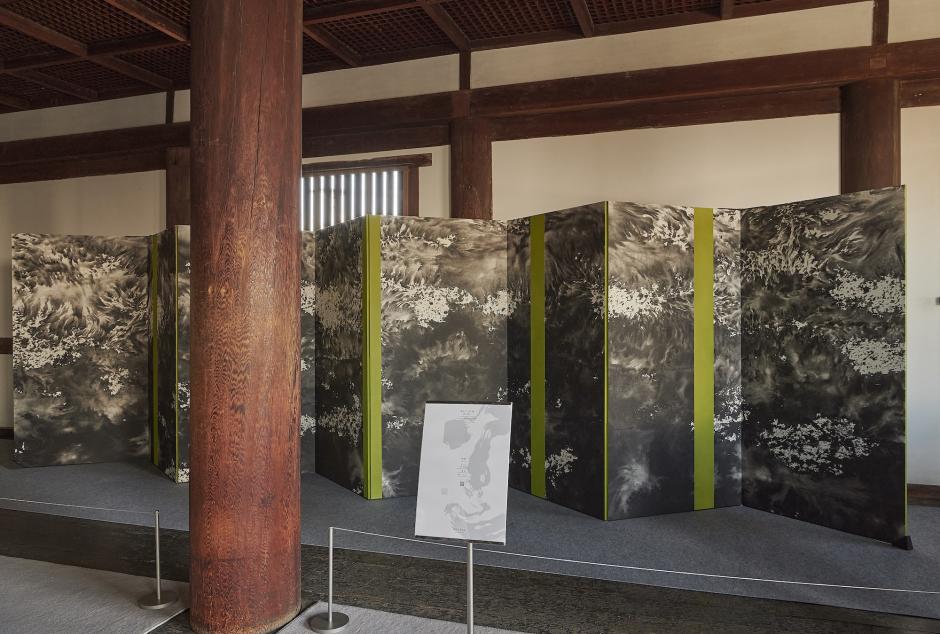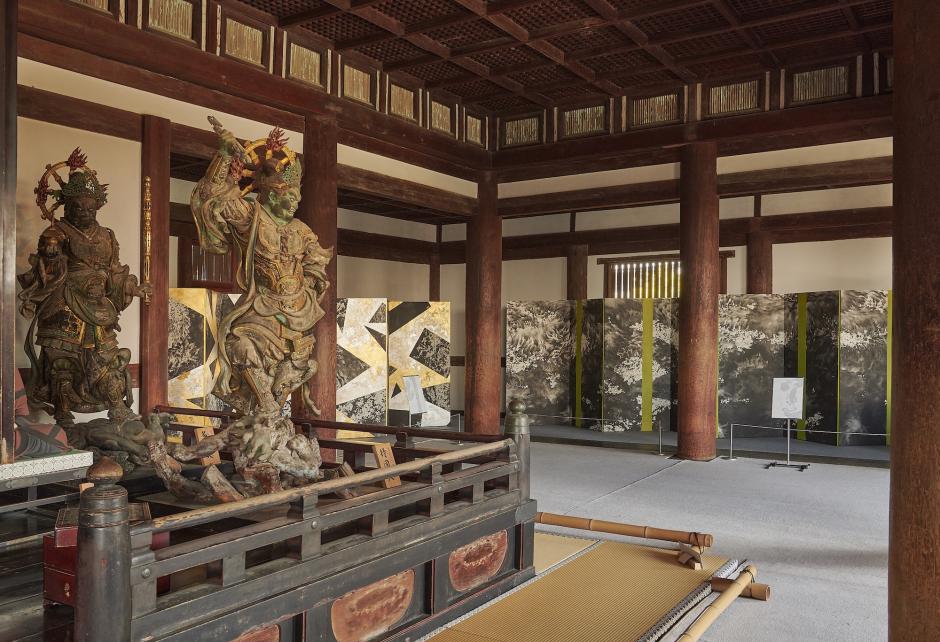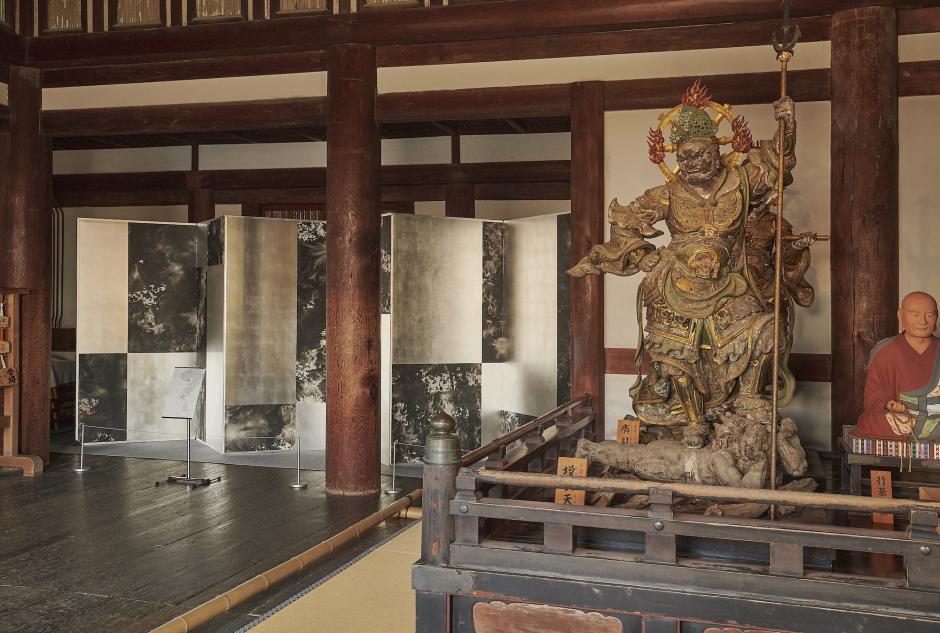Exhibition " Lou Zhenggang at Yakushiji—Enjoying the Mountains and Rivers " will be held at The Tōindō at Yakushiji Temple (WORLD HERITAGE) from April 24th, 2025
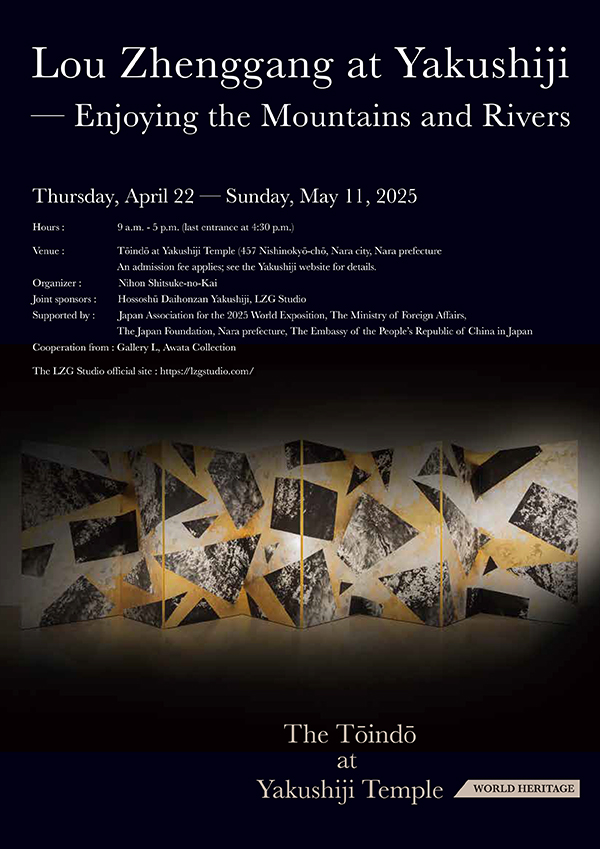
Lou Zhenggang at Yakushiji—Enjoying the Mountains and Rivers
Venue: The Tōindō at Yakushiji Temple (WORLD HERITAGE)
Exhibition period: Thursday, April 22 — Sunday, May 11
Opening hours: 9 a.m. - 5 p.m. (last entrance at 4:30 p.m.)
*An admission fee applies; see the Yakushiji website for details.
Organizer: Nihon Shitsuke-no-Kai
Joint sponsors: Hossoshū Daihonzan Yakushiji, LZG Studio
Supported by: 2025 Osaka, Kansai, Japan; the Ministry of Foreign Affairs; the Japan Foundation, Nara prefecture; the Embassy of the People’s Republic of China in Japan
Cooperation from: Gallery L, Awata Collection
Planning: Takeyasu Kikuchi (LZG Studio)
Exhibition overview
Lou Zhenggang was born in Heilongjiang province, China. She studied calligraphy and painting under the guidance of her father from an early age and in the 1970s became a prominent figure, a child prodigy in the Chinese calligraphy and painting world. In 1986, she relocated to Japan, made Tokyo her base, and has been active as a painter and calligrapher since then. Between 1993 and 2000, she made New York her primary residence, then returned to Japan. She presently makes Izu her creative hub, where she continues to produce her exceptional work.
Considering carefully the nature of painting and her artistic goals, Lou faces the dramatically changing state of contemporary art. She is not bound by tradition; undistracted, she aspires to present the artistic value that wells up within her.
Yusangansui—delighting in the beauty of nature—is Lou’s response to the mountains and sea around her studio. In this event, three folding screen paintings she completed in 2015 are being exhibited in the Tōindō (a national treasure) at Yakushiji Temple, a National Treasure.
Lou Zhenggang
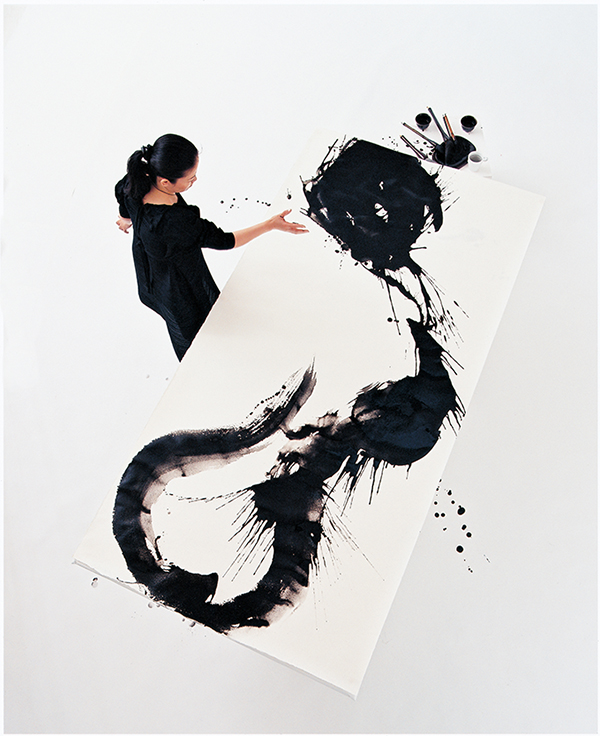
Calligrapher and painter. She has held 27 solo exhibitions and 3 traveling exhibitions in several countries including Japan, the U.S., and China, all receiving high acclaim. With her mastery in creation derived from her ceaseless self-discipline, and her unique artistic vision drawn from her deep humanistic background, she has created numerous series of works such as "Life and Love", "Sun, Moon and Brightness", "Heart", "Harmony", "Life, Life", and "Nature".
In recent years, she has established a studio in Izu, and has been launching her "Untitled" series of abstract paintings. This series was exhibited in "ABSTRACTION: The Awakening and Development of Abstract Painting from Cézanne, Fauvisme, Cubisme to the Present" at the Artison Museum in Tokyo in 2023, and has been sold privately at Christie's and other world-class auction houses. As such, her works have established her prestigious reputation all over the world.
The Tōindō at Yakushiji Temple (WORLD HERITAGE)
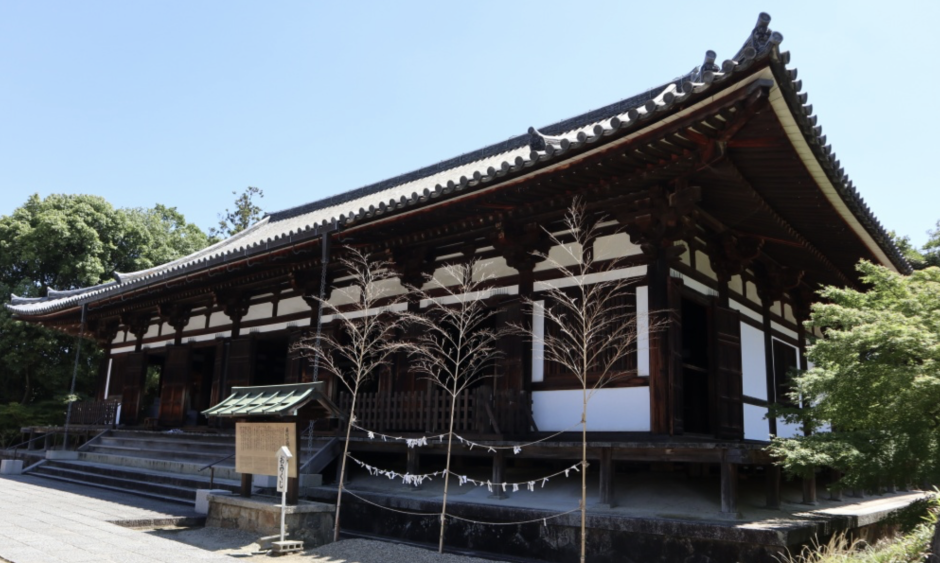
The Toindo was built during the early eighth century at the request of Imperial princess Kibi for the repose of the soul of her mother, Empress Genmei (660–721). The hall, a National Treasure, originally stood on the east side of the temple complex, hence its name. It was rebuilt in 1285 facing southward before being reconstructed in 1733 in its current orientation facing west, possibly for auspicious reasons. While the floors of temple halls are often earthen, Toindo has wooden flooring. It also has served as a hall for Zen meditation and at one point was renamed Toin Zendo. Each of these factors has contributed to it being known as the oldest extant Zen meditation hall in Japan.
Like the Large Lecture Hall (Daikodo), the Toindo features a hip-and-gable (irimoya-zukuri) roof, which arrived in Japan from China in the sixth century and has been used in temple and shrine architecture ever since. The gables usually provide protection for the core, or moya, of the building, while the hip roof covers raised aisles (hisashi) that run around the outside of the core. The roof itself is covered by the traditional tiling method known as hon kawarabuki composed of broad, flat concave tiles linked by semi-cylindrical convex tiles. The base of the building is raised to protect the structure from flooding and dampness.
https://yakushiji.or.jp/en/temples/012.html
